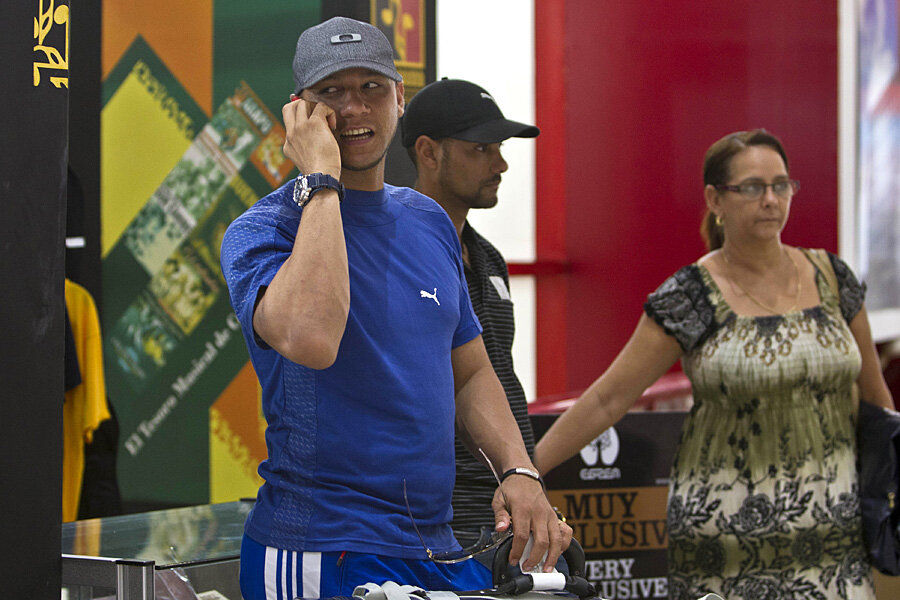Traveling with electronics? How to fly without bulky cameras, laptops.
Loading...
As the world becomes more connected — and the ability to work remotely increases every day thanks to technology — traveling with electronics is becoming standard. But bringing cameras, laptops and their bulky accessories adds to the airline baggage fees you have to pay. Follow a few tips and reduce your baggage – and the fees. You might even be able to get away with just a carry-on bag!
Alternatives to Space-Hogging Camera Equipment
Ditch that traditional DSLR camera with all its lenses. With a plethora of alternatives, most people no longer need to carry around large cameras and their accessories. If you’re looking to get high-quality photos, a mirrorless DSLR camera could be the perfect fit for your needs. It offers interchangeable lenses and has a lighter body because it is mirrorless. Major manufacturers like Olympus, Nikon, and Canon have a variety of offerings in this category. However, you still may carry several lenses to get maximum use. But if your goal is to really cut down on the extras, a compact camera is even better. Frequently coming in at less than a pound, this type of camera makes for a much less hefty tool.
Are your travels on the extreme side with a dose of the outdoors? GoPro‘s cameras, known for their durability, have rapidly gained popularity as they’re used by everyone from casual tourists to extreme sports enthusiasts and are excellent for capturing hands-free footage of the action. If you’re looking to get creative with your angles, I’ve seen people use them for bird’s-eye views by attaching them to toy helicopters or kites.
Another alternative is commonly used to memorialize everyday explorations: your smartphone. With apps like Camera+, Adobe Photoshop Express and many more for both iOS and Android, it is possible to get acceptable photos with your smartphone and even edit them on the same device.
Tech to Use for Work Instead of a Laptop
Besides using your phone to take pictures, you can also use a plethora of mobile apps to work on the go, like these apps for small business owners. Is a phone screen too small for you? Tablets offer larger screens without the heft of a laptop, and many mobile apps work on tablets. With so many options for everything from email clients to To Do list managers and writing apps, you can customize a suite to fit your work needs. If you’ve got a lot to jot down, a detachable keyboard or stylus should help. Staying connected to use many of your apps and services is easy if you pick up a Wi-Fi hotspot or tether your devices. Here are some tips on getting data abroad.
Electronics Accessories for Travel
The market for tech accessories seems to be bigger than the offerings of the tech items themselves. Here are a few to consider taking on your travels. Wi-Fi-enabled cards within your camera cut down on the number of cords you need to bring to transfer your photos between devices; you just have to be willing to wait until you have a connection to sync them up. Having a sturdy stand or tripod can make a huge difference in the quality and ease of taking your photos. Opt for a versatile tripod like the Gorilla line from Joby, which features flexible legs that can be secured around nearby branches, poles or other objects to get the best shot. Joby also has great options for supporting your smartphone.
Once you have your preferred devices and their accessories picked out and loaded up with useful apps, you need a way to keep them juiced up during your adventures. First make sure you have an adapter. The Wirecutter has recommended a great one that is still available online through Amazon. Don’t forget to pack all the cords you’ll need. You may even be able to use the same cord for multiple devices (especially if you have a preference for Apple products), but keep in mind that bringing only one cord means being able to charge one item at a time. I’ve found that carrying an extra slim external battery, like those produced by Mophie, can help charge up your devices when you don’t have access to a plug. You can find ones that fit multiple devices and can restore almost a full charge.
Lastly, you need a bag to carry and protect all this gear. Aim to strike a balance between having enough padding and pockets to protect your electronics and not being weighed down by bulky bags. Also, look for bags that don’t scream, “Steal my expensive equipment!” Remove the logos of well-known camera manufacturers and find a bag that blends in with your surroundings. Best of luck and happy travels!





